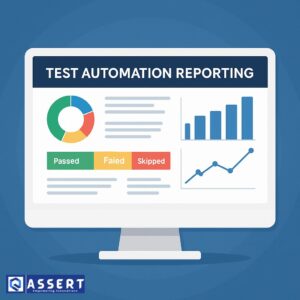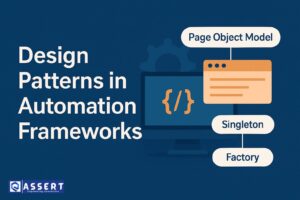When building an automation framework, one common mistake is spreading test data across multiple files or scripts. This makes maintenance hard and increases the chances of data mismatches.
The best solution is Centralized Test Data Management — a method where all your test data is stored and accessed from one place. It improves consistency, reusability, and helps scale your framework easily.
What Is Centralized Test Data Management?
Centralized Test Data Management (CTDM) means keeping all your test-related data — like input values, credentials, environment details, and expected results — in a single source or repository.
This can be a:
-
JSON file
-
Excel sheet
-
Database
-
Properties or YAML file
-
Or even a data API
With this, your framework can easily fetch data dynamically, making your scripts cleaner and more flexible.
Why It’s Important
-
Reduces Duplication: You don’t need to repeat the same data in multiple test cases.
-
Improves Consistency: All test cases use the same data format and source.
-
Easier Maintenance: Changing one data value updates all related tests.
-
Supports Multiple Environments: You can switch between QA, Stage, and Production easily.
-
Enables Data-Driven Testing: Ideal for running the same test with multiple datasets.
How to Set It Up in Your Framework
Let’s see how to create a simple centralized test data setup in a Java + TestNG + Cucumber framework.
Step 1: Create a Data Folder
In your project structure, add a folder like:
src/test/resources/testdata/
Step 2: Store Data in a Central File
Example: TestData.json
{
“login”: {
“username”: “testuser”,
“password”: “Test@123”
},
“search”: {
“query”: “Playwright automation”,
“filter”: “latest”
}
}
Step 3: Create a Utility Class to Read Data
import java.nio.file.*;
import org.json.simple.*;
import org.json.simple.parser.*;
public class TestDataManager {
private static JSONObject data;
static {
try {
String content = new String(Files.readAllBytes(Paths.get(“src/test/resources/testdata/TestData.json”)));
JSONParser parser = new JSONParser();
data = (JSONObject) parser.parse(content);
} catch (Exception e) {
e.printStackTrace();
}
}
public static String getData(String section, String key) {
JSONObject sectionData = (JSONObject) data.get(section);
return (String) sectionData.get(key);
}
}
Step 4: Use It in Your Test
String username = TestDataManager.getData(“login”, “username”);
String password = TestDataManager.getData(“login”, “password”);
Step 5: Keep Data Environment-Specific
You can create multiple JSON files like:
-
TestData_QA.json -
TestData_Staging.json -
TestData_Prod.json
Then load them based on the environment:
String env = System.getProperty(“env”, “QA”);
String filePath = “src/test/resources/testdata/TestData_” + env + “.json”;
Benefits of This Approach
-
Single Source of Truth: One file for all test data.
-
Easy Updates: Just change the value in the central file.
-
Environment Flexibility: Switch between test environments easily.
-
Supports Reusability: Any test class can access data without duplication.
Bonus: Integrating with AI or APIs
You can go one step ahead and use AI or APIs to fetch test data dynamically.
For example, connect your framework to an AI-based data generation API or a central database to create test data on the fly.
🔗 Explore AI Test Data Generation Techniques
Conclusion
Setting up Centralized Test Data Management helps create a more organized, scalable, and maintainable automation framework. It saves time, reduces errors, and makes it easier for teams to collaborate.
Start by moving your test data to a central file or database, then slowly extend it with environment-based and AI-powered data.




